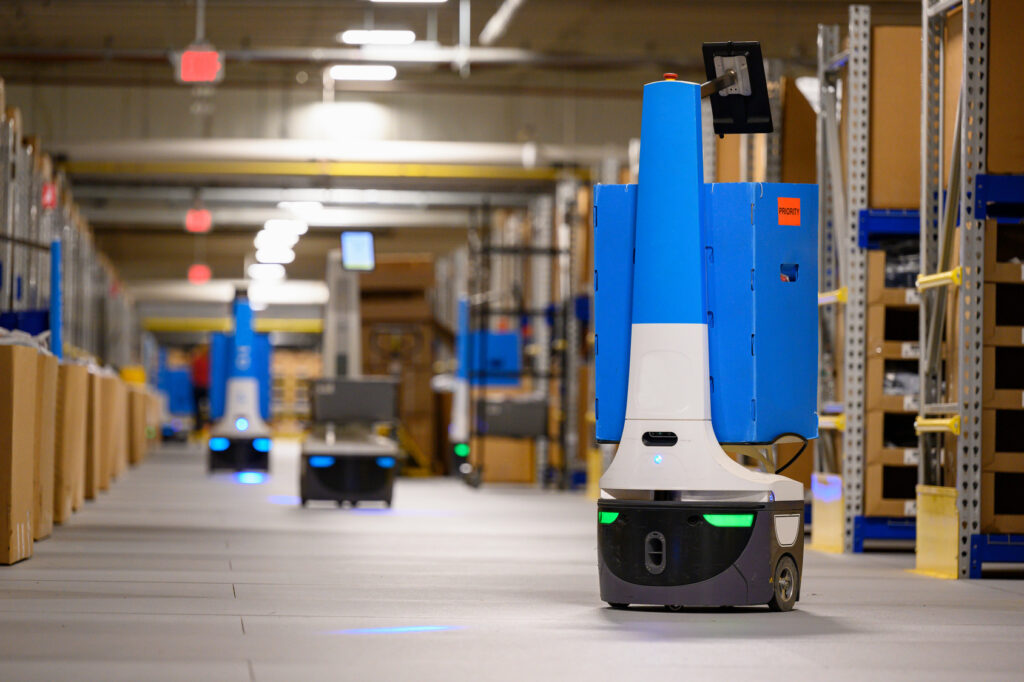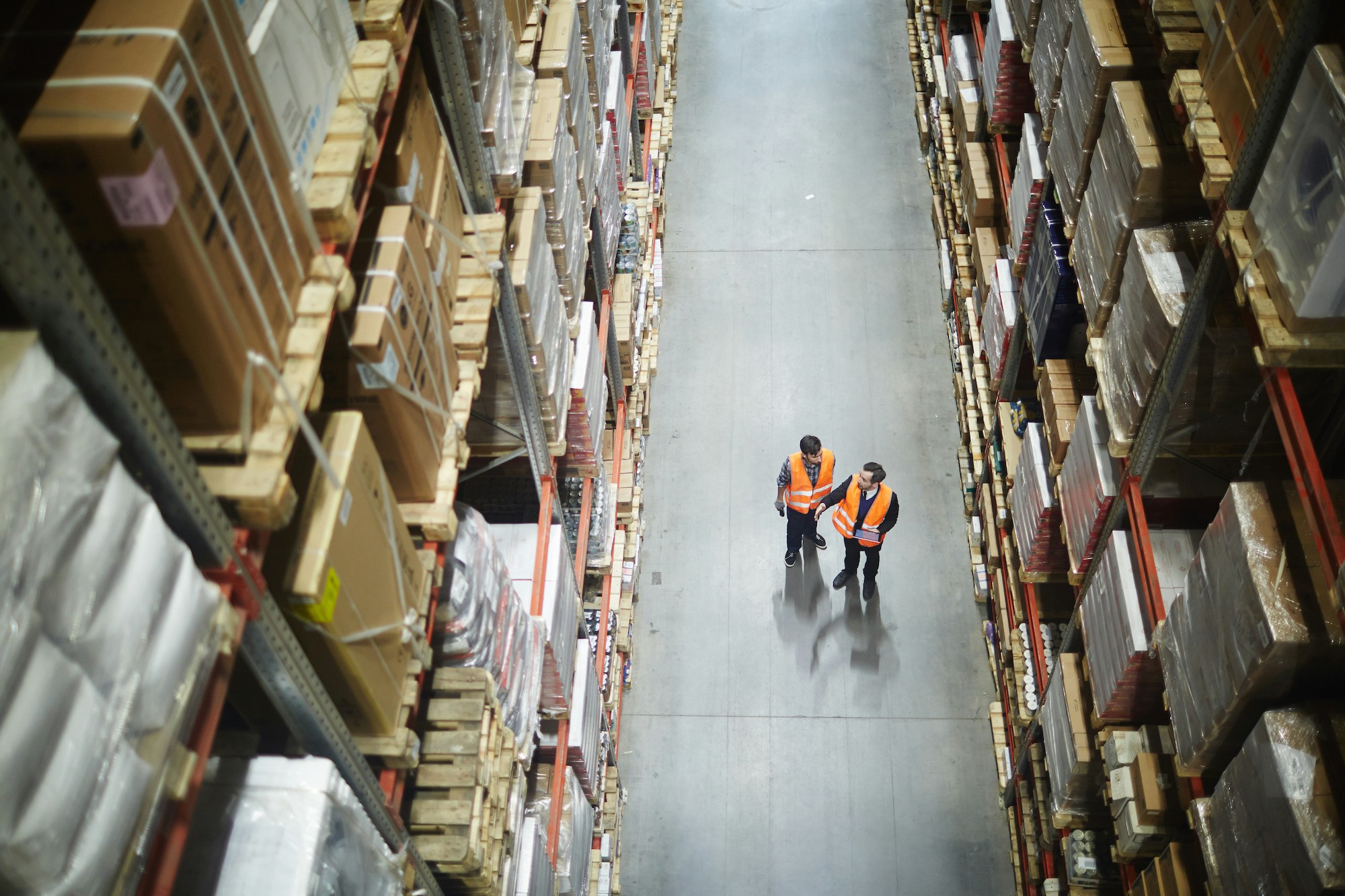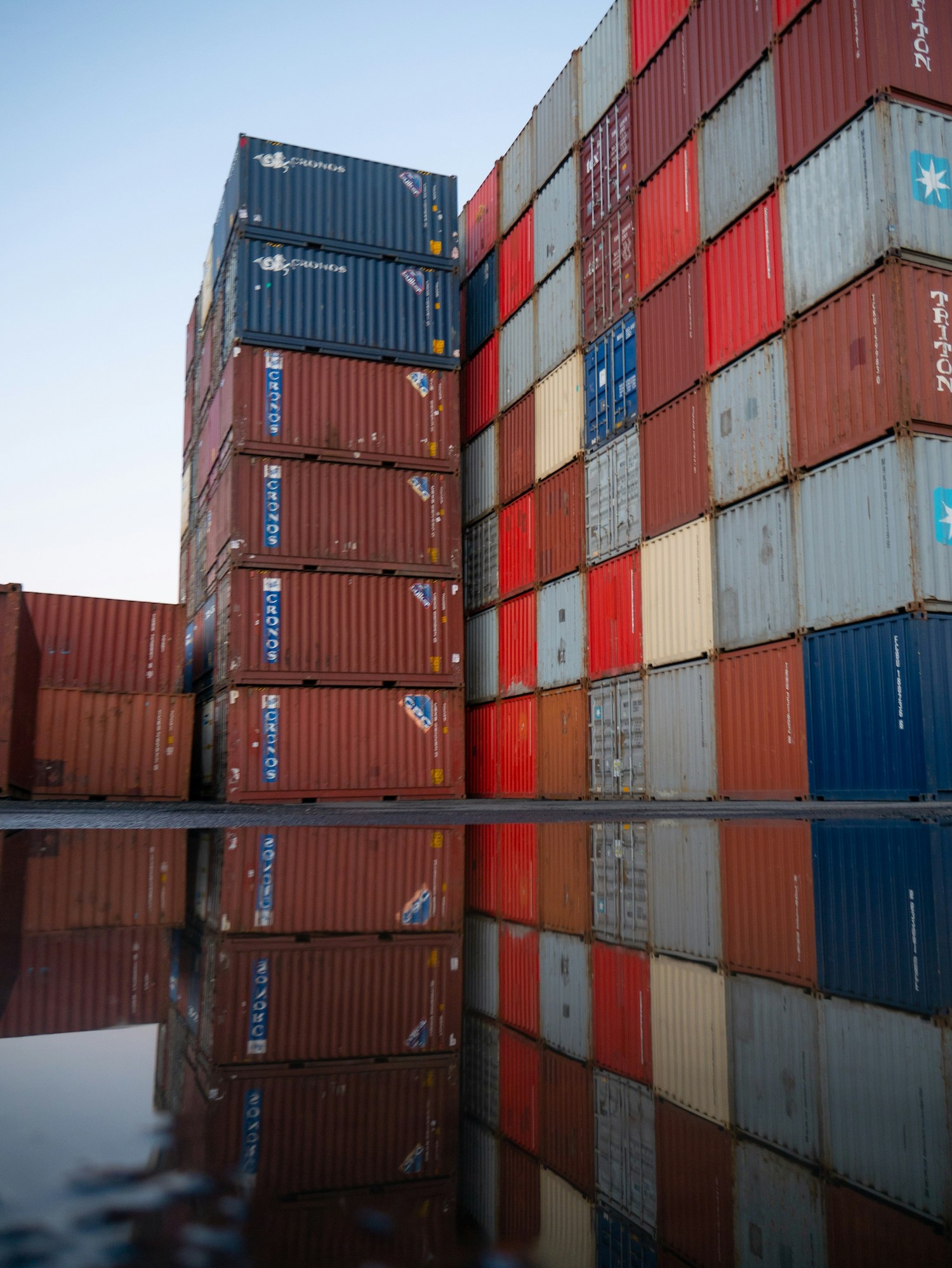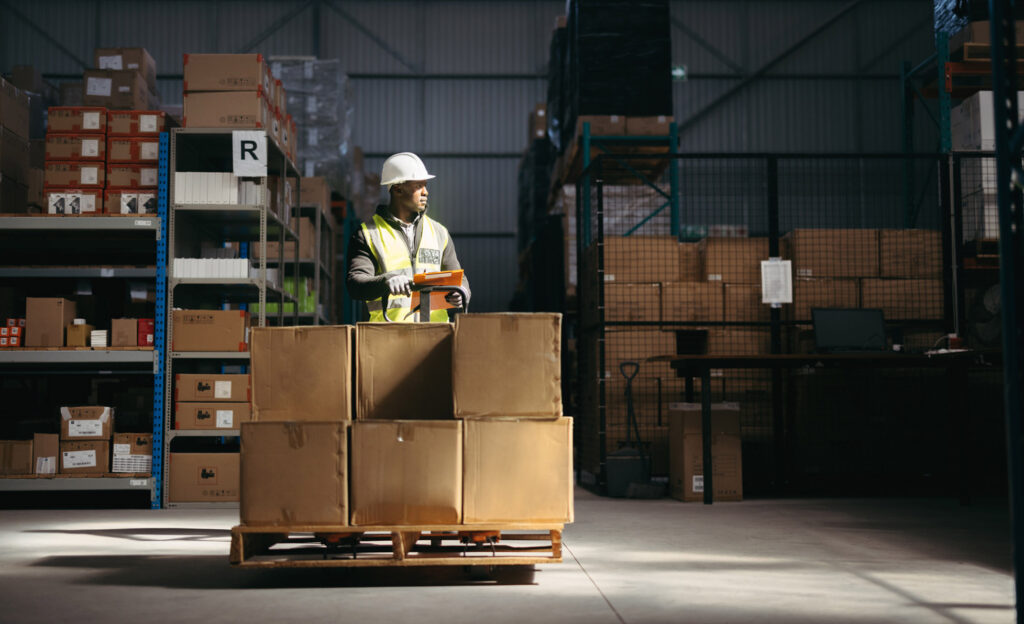In today’s fast-paced ecommerce environment, where consumer expectations are higher than ever, staying ahead in supply chain optimization is no longer optional—it’s a necessity for businesses aiming to maintain a competitive edge. The ability to swiftly and efficiently manage logistics is the difference between a business that thrives and one that falters. With global supply chains growing increasingly complex and customer demand for faster, more accurate deliveries rising, companies must leverage the latest technologies to remain agile and responsive.
Enter artificial intelligence (AI) and robotics—two of the most transformative forces shaping the future of 3PL logistics. While once considered futuristic concepts, these technologies have quickly become essential tools in the modern supply chain. Their ability to automate, predict, and optimize processes has made them invaluable assets for companies looking to enhance efficiency, reduce costs, and meet customer expectations.
At North Bay Distribution (NBD), AI and robotics are more than just buzzwords—they are the backbone of an evolving 3PL landscape. NBD has integrated these cutting-edge technologies into daily operations, allowing brands to stay ahead of the curve and deliver unparalleled service to their customers. From automating order fulfillment to predictive demand forecasting, AI and robotics are transforming how brands fulfill orders and delight customers.
In this blog, we’ll dive into the ways these technologies are revolutionizing 3PL logistics, highlighting how North Bay Distribution leverages them to create smarter, faster, and more efficient supply chains.
The Crucial Role of Technology in 3PL
The success of any third-party logistics (3PL) provider today hinges on its technological capabilities. With the demands of modern retail requiring faster delivery times, more accurate order fulfillment, and real-time inventory visibility, technology has become the foundation upon which successful logistics operations are built. At the heart of this transformation are two game-changing innovations: artificial intelligence (AI) and robotics.
AI Integration
Artificial intelligence is emerging as a powerful tool in automating and optimizing supply chain processes. AI’s ability to analyze vast amounts of data and make real-time decisions has revolutionized 3PL operations. From demand forecasting to inventory management, AI enables logistics providers to optimize every aspect of the supply chain. By identifying patterns and predicting fluctuations in demand, AI helps businesses allocate resources more efficiently, reducing stockouts and minimizing excess inventory.
AI streamlines processes such as order processing, route optimization, and warehouse management, ensuring that operations run smoothly and efficiently. The predictive power of AI not only enhances day-to-day logistics but also provides long-term strategic insights that help 3PL providers adapt to changing market conditions. In short, AI is helping to create smarter, more responsive logistics systems that can keep pace with the ever-evolving demands of modern retail.
Robotics Addition
Robotics has made a significant impact on the logistics stage, with machines now capable of performing tasks that were once exclusively handled by human workers. Autonomous robots pick, pack, and navigate warehouses with precision and speed, enhancing productivity in ways human labor alone cannot match. These machines can work around the clock, ensuring consistent operations, reducing human error, and dramatically improving order fulfillment times.
In addition to boosting efficiency, robotics technology is scalable, meaning it grows alongside a business’s needs. As demand fluctuates, robotic systems can be programmed to adapt, handling more orders during peak seasons without the need for additional human labor. The ability to automate repetitive tasks such as picking and packing allows human employees to focus on more complex, value-added activities, thereby optimizing workforce productivity.
Together, AI and robotics are not only reshaping 3PL logistics but are also setting a new standard for speed, accuracy, and efficiency in supply chain management.
AI and Robotics Revolutionizing Warehouse Management
AI in Warehouse Management
Artificial intelligence is reshaping warehouse management by automating manual processes and enhancing operational efficiency. Traditionally, tasks such as inventory management, picking, and packing were labor-intensive and prone to human error. With AI integration, these tasks are now streamlined, significantly reducing mistakes and increasing overall productivity. AI-driven systems automatically track inventory levels, determine the optimal picking routes, and organize packing processes with greater precision and speed than manual methods.
One of AI’s most powerful capabilities is its ability to forecast demand. By analyzing historical data and market trends, AI predicts future inventory needs, allowing businesses to stay ahead of customer demand. This predictive accuracy helps companies avoid costly stockouts while preventing the accumulation of excess inventory, optimizing storage space and reducing operational costs.
Robotics in Warehouse Management
Robotics have taken warehouse management to the next level, with AI-powered robots autonomously navigating warehouses to perform essential tasks such as picking, packing, and transporting goods. These robots are programmed to follow optimized routes, minimizing travel time and accelerating the order fulfillment process. By taking over repetitive and labor-intensive tasks, robotics allow warehouses to operate more efficiently and consistently.
The productivity gains from robotics are immense. By automating routine tasks, human workers are freed up to focus on more complex roles that require decision-making and problem-solving skills. This not only boosts overall performance but also ensures that human labor is used where it adds the most value, further increasing efficiency and speeding up warehouse operations.
AI and Robotics Synergy
The true potential of AI and robotics comes to life when these technologies work together. AI algorithms continuously learn and adapt in real-time, fine-tuning processes to ensure ongoing improvement. For example, as robots complete tasks, AI systems analyze the data generated to identify areas where efficiency can be enhanced, leading to continuous optimization of workflows.
In addition, integrating AI with IoT sensors allows for real-time monitoring of warehouse conditions, such as temperature, humidity, and equipment performance. This data-driven approach optimizes environmental factors, ensuring that products are stored under ideal conditions and improving overall operational outcomes. The synergy between AI and robotics enables warehouses to operate at peak performance, delivering faster, more accurate, and more reliable service.
In short, the combination of AI and robotics is revolutionizing warehouse management by enhancing productivity, increasing operational efficiency, and ensuring warehouses are prepared to meet the demands of modern purchasing behavior across all channels.
The AI Revolution in Order Management
Order Processing
Artificial intelligence is revolutionizing order management by automating the entire order processing cycle, reducing the need for manual intervention and significantly speeding up the fulfillment process. From the moment an order is placed to when it’s shipped, AI systems handle tasks such as verifying order details, determining optimal shipping methods, and coordinating with warehouses for fast fulfillment. By automating these traditionally manual steps, AI minimizes errors, reduces processing times, and ensures that orders are fulfilled quickly and accurately. This accelerated process not only enhances operational efficiency but also improves customer satisfaction by reducing wait times.
Exception Management
One of AI’s standout capabilities in order management is its ability to detect and manage potential issues in real-time. Advanced AI algorithms continuously analyze the flow of orders, identifying any discrepancies, bottlenecks, or potential delays before they escalate into larger problems. Whether it’s a sudden inventory shortage, a mismatch in order details, or a logistics issue, AI-driven systems can flag these exceptions immediately and trigger corrective actions. By addressing problems as they arise, AI ensures that orders are processed accurately and on time, improving reliability and reducing costly errors.
Real-time Inventory Visibility
In the modern 3PL landscape, having accurate, real-time visibility of inventory across multiple fulfillment centers is crucial. AI enables businesses to track inventory levels across all locations, ensuring that stock is managed efficiently and orders are fulfilled from the optimal center. This cross-center tracking capability allows businesses to meet demand quickly and accurately, as AI directs orders to the most strategically located warehouse based on proximity, stock levels, and delivery times. The result is a streamlined order fulfillment process that reduces shipping times, minimizes costs, and enhances the customer experience.
With AI transforming order management, businesses expect faster processing times, fewer errors, and the ability to quickly resolve any issues, all while maintaining real-time visibility over inventory and logistics. This shift toward AI-driven processes is helping 3PL providers like North Bay Distribution stay ahead of the curve and offer superior service to brands and customers alike.
Inventory Control and Demand Forecasting with AI
Accurate Demand Forecasting
AI plays a pivotal role in inventory management by accurately forecasting demand. Using historical sales data, market trends, and even external factors like seasonality and economic shifts, AI systems predict future inventory needs with remarkable precision. This allows businesses to maintain optimal inventory levels, avoiding the costly issues of stockouts or excess inventory. By understanding what products are likely to be in demand, AI enables companies to make informed decisions, ensuring that they always have the right stock at the right time, without overburdening warehouses or tying up working capital.
Proactive Inventory Control
AI doesn’t just forecast demand—it also actively manages inventory in real time. By continuously monitoring stock levels across multiple locations, AI triggers replenishment orders automatically when levels drop below a predetermined threshold. This proactive approach ensures that businesses are always prepared to meet customer demand without the risk of running out of stock.
Additionally, AI helps optimize clearance strategies by identifying slow-moving or obsolete inventory. Once these items are flagged, businesses can take timely action, such as launching targeted promotions or clearance sales to free up valuable warehouse space. This not only reduces storage costs but also improves cash flow and minimizes waste.
Efficiency and Planning
One of AI’s biggest advantages in inventory control is its ability to improve resource allocation. By aligning inventory levels with projected demand, AI enhances the efficiency of working capital and warehouse operations. Businesses no longer need to overstock items in fear of shortages, leading to reduced storage costs and better use of resources.
This improved planning translates into better customer service, as businesses are able to meet customer demand quickly and accurately. It also drives cost savings, as AI helps optimize the entire supply chain, reducing unnecessary expenses and ensuring a leaner, more efficient operation.
In sum, AI-driven inventory control and demand forecasting empower businesses to be more responsive, efficient, and cost-effective, while enhancing customer satisfaction through improved availability and faster fulfillment times.
The Future of 3PL Logistics with AI and Robotics
Operational Efficiency
The future of 3PL logistics lies in the continuous enhancement of operational efficiency, with AI and robotics at the forefront. These technologies are revolutionizing how warehouses operate, offering real-time analytics and machine learning capabilities that drive productivity to new heights. By automating tasks such as inventory control, order picking, and packing, AI and robotics reduce errors, accelerate fulfillment, and ensure that warehouses are always running at peak performance. The precision these systems offer in tracking and managing stock means higher accuracy in inventory management, leading to faster, more reliable order fulfillment.
Strategic Importance
AI and robotics are not merely tools for improving efficiency—they are the foundation for future innovation in the logistics industry. As these technologies evolve, they enable 3PL providers to explore new ways to streamline operations and improve service offerings. Predictive analytics powered by AI anticipates supply chain disruptions, while robotics adapt to changing demands in real time, providing the flexibility needed in a rapidly changing ecommerce and retail environment. This constant innovation positions AI and robotics as critical drivers of the next wave of logistics solutions, setting forward-thinking companies apart from their competition.
Competitive Advantage
For brands, partnering with a 3PL provider that fully embraces AI and robotics, like North Bay Distribution, is essential for long-term survival and growth. As the online and retail landscape becomes more demanding, businesses that fail to leverage these advanced technologies risk falling behind. NBD’s AI- and robotics-driven solutions provide the competitive edge needed to streamline logistics, reduce costs, and meet ever-evolving customer expectations. By enhancing every aspect of the supply chain—from inventory management to order fulfillment—NBD helps brands maintain agility, improve customer satisfaction, and scale their operations sustainably.
In the future, brands who align themselves with AI- and robotics-savvy 3PL providers will not only stay competitive but will also be poised for growth in an increasingly tech-driven logistics landscape.
North Bay Distribution: Leading the Evolution of Fulfillment Services
Integrated AI and Robotics Platform
Ranking in the top 7% in the USA for the use of advanced robotics, NBD leverages automation to streamline every aspect of the supply chain, delivering unparalleled efficiency for brandsand customers alike. What sets NBD apart is its blend of cutting-edge technology and human expertise. Behind the platform is a dedicated team of logistics professionals who combine deep industry knowledge with advanced technological capabilities. This fusion of human insight and automation ensures that NBD delivers logistics excellence tailored to each client’s unique needs.
NBD’s tech integrated fulfillment network drives a 76% improvement in inventory accuracy, achieving a remarkable 99.9% accuracy rate. This ensures that orders are consistently shipped within one day of placement, a 40% improvement over non-automated warehouses. Additionally, automation reduces labor costs by 3% annually, contributing to an overall cost-effective solution that brands can rely on to meet growing customer demands.
By combining innovative technology with expert support, North Bay Distribution is redefining what it means to lead in the 3PL space, offering businesses the tools and insight needed to thrive in today’s fast-paced logistics environment.
If you’re ready to take your logistics to the next level, it’s time to explore how North Bay Distribution can provide your business with a competitive edge. Our cutting-edge AI and robotics-driven services will help you enhance efficiency, reduce costs, and meet customer expectations like never before. Partner with us today to transform your supply chain and stay ahead in the fast-evolving world of logistics.
FAQs
1. What is the role of artificial intelligence (AI) in 3PL logistics?
AI plays a pivotal role in 3PL logistics by automating complex tasks, enhancing decision-making processes, and providing predictive insights. It optimizes inventory management, streamlines picking and packing operations, and improves demand forecasting, leading to increased efficiency and reduced errors.
2. How do robotics enhance warehouse management for businesses utilizing 3PL?
Robotics enhance warehouse management by using AI-powered robots and autonomous vehicles to navigate warehouses with precision. These robots boost productivity and speed up order fulfillment, ensuring accurate and timely processing of customer orders. They also minimize human error and maximize operational efficiency.
3. How does AI contribute to inventory control and demand forecasting in 3PL logistics?
AI contributes to inventory control and demand forecasting by analyzing historical sales data, market trends, and external factors to predict future demand accurately. This allows for optimized inventory levels, preventing stockouts and excess inventory. AI also continuously monitors inventory levels and triggers replenishment orders as needed.
4. What are the advantages of AI and robotics in terms of warehouse condition monitoring?
AI and robotics offer significant advantages in warehouse condition monitoring by integrating with IoT sensors to provide real-time data on warehouse conditions. This continuous monitoring enables proactive maintenance and immediate response to potential issues, ensuring optimal operational conditions.
5. How do businesses benefit from AI-powered inventory control and demand forecasting?
Businesses benefit from AI-powered inventory control and demand forecasting through improved accuracy in demand prediction and optimized inventory levels. This leads to fewer stockouts, reduced excess inventory, lower operational costs, and enhanced customer satisfaction by ensuring products are available when needed.
6. How does North Bay Distribution utilize robotics in its fulfillment services?
North Bay Distribution utilizes robotics to automate inventory management, picking, packing, and order processing. Their integrated platform leverages robotics for efficient warehouse navigation and order fulfillment, ensuring high efficiency and reliability.
7. What advantages does North Bay Distribution offer through its AI- and robotics-powered fulfillment services?
North Bay Distribution offers several advantages through its AI- and robotics-powered fulfillment services, including enhanced operational efficiency, real-time inventory visibility, proactive inventory management, and reduced operational costs. Their advanced technology ensures precise and timely order fulfillment, boosting overall customer satisfaction.
8. What are the immediate benefits of adopting AI- and robotics-driven fulfillment services from North Bay Distribution?
The immediate benefits of adopting AI and robotics-driven fulfillment services from North Bay Distribution include increased accuracy in order processing, faster order fulfillment, optimized inventory management, and real-time operational insights. These advantages lead to lower operational costs, improved efficiency, and enhanced customer satisfaction.





